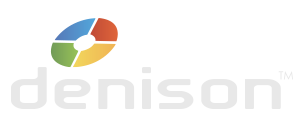Your market position has been slipping for some time. It shows in your sales growth, return on equity (ROE), return on investment (ROI), and customer satisfaction. And you don’t have to go on Undercover Boss to figure out that your employee satisfaction is slipping, too. The last two CEOs failed to turn the situation around. How do you propose to do it?
Don’t Start Without Solid Data
Have you taken your company’s cultural temperature lately? Decades of research indicates that corporate culture is a good predictor of business performance. That same research, alongside extensive marketplace experience, shows that the Denison Model is effective both for diagnosing and for treating an organization’s cultural malaise.
We begin by using our statistically validated, time-tested, proprietary data tool, the Denison Organizational Culture Survey (DOCS), to assess your company’s current strengths and weaknesses as they apply to organizational performance. The survey measures four key cultural traits and twelve related management practices. This gives you the baseline data you need to assess and strategize the cultural shifts your organization needs to make to reach your business goals.
The Key Traits
The Denison Model assesses strengths in four key areas of your corporate culture: Adaptability, Mission, Involvement, and Consistency.
- Mission. Do you know where you’re going? Do you have clear goals and a strategy to reach them?
- Adaptability. Are you listening to the marketplace, to customers? How well do you identify and respond to their changing needs?
- Involvement. How well do you empower employees, build teams, and develop the human capability in your organization?
- Consistency. Have you established coordinated systems that enable you to build agreement based on your core values?
Once we’ve tabulated the survey answers, we compare your totals with those from 1,000 companies across the world. The resulting chart shows how you stack up against this global benchmark sample. The higher your percentile (the more color there is in a given slice of the pie chart), the more companies you have outscored.
What do the scores teach us?
Not only do DOCS rankings give you a sense of how you compare with the rest of the business world, they actually help predict your business success! Strong results in paired sectors of the pie correlate to specific positive business outcomes.
External and Internal Focus
- A strong sense of mission and strong adaptability combine for an effective external focus (represented by the top half of the chart), resulting in innovation, sales growth, and market share.
- Strong showings in employee involvement and corporate consistency make for a good internal focus (represented by the bottom half of the chart), contributing to operating performance, product and service quality, and employee satisfaction.
Flexibility and Stability
Pairing the same four traits differently, we gain more insights into company performance.
- High scores in the left-hand quadrants, adaptability and employee involvement, combine for a flexibility that is linked to higher levels of product and service innovation, creativity, and fast response to changing customer and market needs.
- Strong showings in the right-hand quadrants, mission and consistency, are evidence of healthy stability—the capacity to remain focused and predictable over time.
The Balancing Act
The chart also illustrates two significant dynamic tensions that a successful organization must negotiate—shown by traits across the circle from each other.
- It’s crucial to balance the tension between top-down and bottom-up management, measured in the Mission and Involvement slices of the pie. An organization must link its mission and goals with a shared sense of ownership, commitment, and responsibility among its employees.
- The link between the seeming opposites of Adaptability and Consistency is also important. The most successful companies achieve an equilibrium between the dual challenges of adaptation to external situations and maintaining internal integration and consistency.
The Treatment Plan
Even an accurate diagnosis is useless without a sound treatment plan. That’s where our extensive implementation experience comes in. It’s important to make changes carefully: choose the right traits to address, and the best portion of your organization to develop them in; plan carefully to effectively involve both your senior leadership team and the rest of the work force. We help clients navigate the complex environment of corporate culture, moving strategically and wisely, playing to their team’s strengths, and avoiding the pitfalls of poor implementation.
Proof in the Pudding
Time and again, the Denison Model has proven the link between culture and organizational performance—sales growth, ROE, ROI, customer satisfaction, innovation, employee satisfaction, quality, and more.
Our model provides an easy-to-interpret business-friendly approach to performance improvement that is based on sound research principles. In 25 years, across more than 5,000 organizations around the world, we have helped companies transform their corporate cultures, accomplish business turnarounds, guide new leader transitions, and shepherd mergers and acquisitions.
Is it time to take your corporate temperature and diagnose your corporate ailment? If so, we can help you prescribe and implement the changes that DOCS helps us identify together. Call us today to begin the culture conversation your company needs.
For more details about the Denison Model, see:





